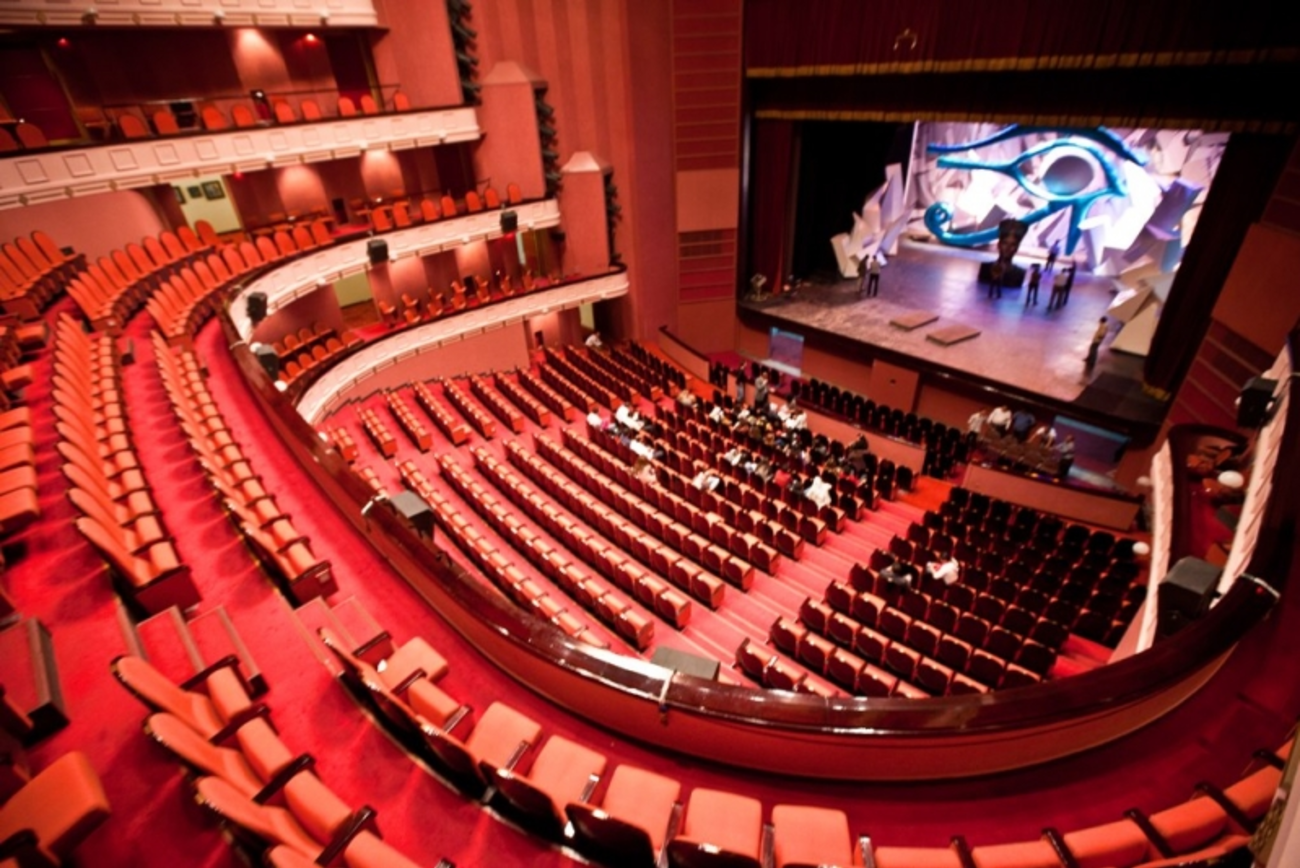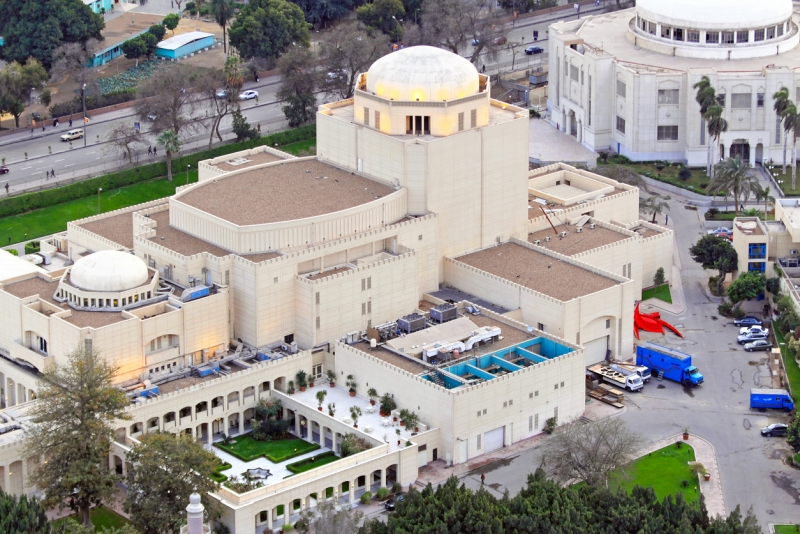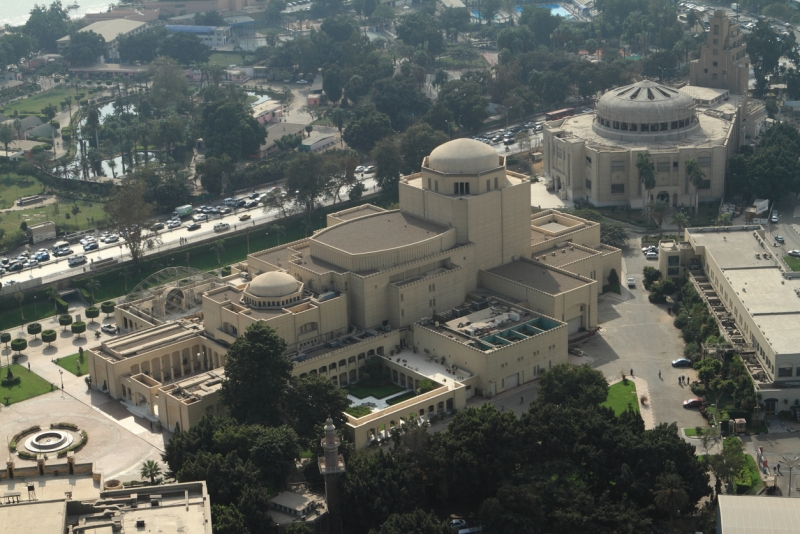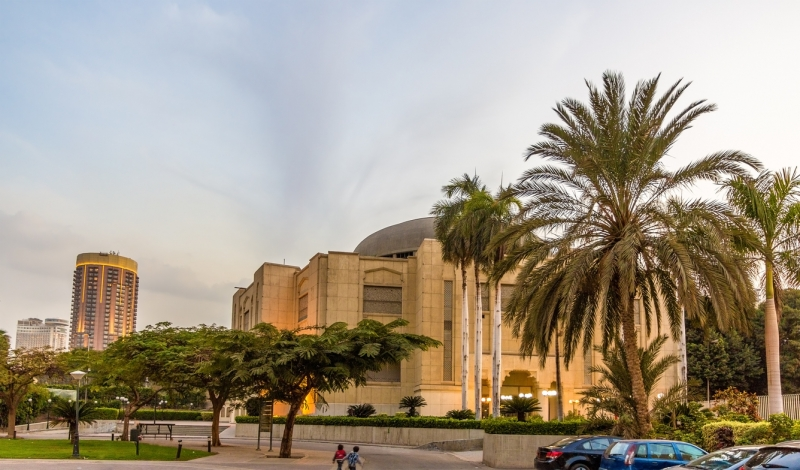Cairo Opera House

The Cairo Opera House stands as one of Egypt’s most remarkable cultural treasures, often overlooked by travelers who come mainly for the pyramids and ancient temples. Beyond its historical wonders, Egypt offers a vibrant world of music, dance, and art — and nowhere captures that better than the Cairo Opera House.
Nestled on Gezira Island in the heart of Cairo, this architectural and cultural masterpiece rose from the ashes of the original Khedivial Opera House, which was tragically destroyed by fire in 1971. In 1988, Egypt unveiled this new national venue, built with generous support from Japan, symbolizing a new era for Egyptian culture.
The Origins of the Cairo Opera House
The Legacy of the Khedivial Opera House
Egypt’s operatic journey began in 1869, when Khedive Ismail ordered the construction of the Khedivial Opera House to celebrate the opening of the Suez Canal. Built by Italian architects in just six months, it became the first opera house in Africa and the Middle East. Its ornate interiors, lavish décor, and European-style performances quickly made it a centerpiece of Cairo’s cultural life.
The Khedive commissioned the Italian composer Giuseppe Verdi to create an opera about ancient Egypt. Although “Aida” was not ready for the grand opening, it premiered there in 1871 and became one of the world’s most iconic operas.
The Fire of 1971 and the Cultural Void It Left
After more than a century of performances, tragedy struck in October 1971 when the Khedivial Opera House was destroyed by fire. The loss was immense — costumes, sets, and priceless instruments were gone, leaving a deep void in Egypt’s cultural scene.
For nearly two decades, Cairo had no proper opera venue. The performing troupes relocated to smaller theaters, but the absence of a national stage was deeply felt. The site of the old opera house eventually became a parking garage known as “Opera Garage,” a painful reminder of what once stood there.
Japan’s Role in the Rebirth of the Opera House
The cultural void remained until Japan offered to fund a new opera house as a gift to Egypt. Construction began in 1985 on Gezira Island, in central Cairo. Designed through collaboration between the Egyptian Ministry of Culture and the Japan International Cooperation Agency (JICA), the project blended traditional Islamic architecture with modern design principles.
After nearly three years of construction, the Cairo Opera House was inaugurated on October 10, 1988, marking a new chapter in Egypt’s artistic history. It not only restored Egypt’s operatic tradition but also symbolized a strong cultural partnership between Egypt and Japan.

Architectural Design and Cultural Symbolism
Blending Islamic Architecture with Modern Design
The Cairo Opera House captivates visitors with its elegant yellow stone façade, graceful domes, and arches inspired by traditional Islamic design. Inside, the décor incorporates both Egyptian and Japanese influences. The color palette of pink and fuchsia, along with a chrysanthemum motif above the main theater, reflects the merging of both cultures — symbolizing royalty in Egypt and longevity in Japan.
The structure also includes practical design adaptations suited to Egypt’s desert climate, such as tile wall coverings instead of fabric to prevent sand damage.
The Role of JICA and the Egyptian Ministry of Culture
This architectural achievement was made possible through close cooperation between the Egyptian Ministry of Culture and JICA. Over time, Japan has continued to support the Cairo Opera House through renovation grants and equipment upgrades, ensuring the venue remains state-of-the-art.
The Opera House also showcases an international fusion of materials — Italian marble, Swedish wood, Czech crystal chandeliers, and locally sourced Egyptian elements — all reflecting Egypt’s global cultural connections.
Symbolic Location on Gezira Island
Situated on Gezira Island in central Cairo, the Opera House occupies a prominent and symbolic position along the Nile River. Its luminous night lighting can be seen from across the city, serving as a beacon of culture. The location, just a short distance from Tahrir Square and the Zamalek district, makes it easily accessible to locals and visitors alike.

Inside the Opera Complex: Venues and Facilities
Main Hall and Small Hall
The Main Hall is the centerpiece of the complex, accommodating up to 1,200 guests. It is the most advanced theater in Egypt, equipped with a large stage, orchestra pit, and multi-level seating — ideal for opera, ballet, and orchestral performances.
The Small Hall provides a more intimate experience, seating 360 guests. It is used for chamber concerts, lectures, and cultural events, with adaptable seating that allows the space to double as a reception hall.
Open-Air Theater and El Gomhouria Theater
The Open-Air Theater provides a unique atmosphere for outdoor performances under Cairo’s starry sky, seating up to 600 people. El Gomhouria Theater, located near Abdeen Royal Palace, offers a grand stage for mid-sized performances and remains one of Cairo’s most beloved cultural venues.
Arab Music Institute and Alexandria Opera House
The Arab Music Institute plays a vital role in preserving traditional Arabic music, featuring a modernized theater, museum, and collection of rare instruments. Meanwhile, the Alexandria Opera House, originally built in 1918, was beautifully restored in 2004 and continues to host performances from Cairo Opera House companies.
The Roman Theater in Alexandria
Among the Opera’s affiliated venues is the ancient Roman Theater in Alexandria — Egypt’s only Roman amphitheater. Dating back to the 4th century AD, this site provides a spectacular setting for open-air performances, blending ancient history with modern art.

Customize Your Dream Vacation!
Get in touch with our local experts for an unforgettable journey.
Plan Your Trip
Resident Companies and Artistic Diversity
Cairo Symphony Orchestra and Opera Company
The Cairo Symphony Orchestra is one of the Middle East’s leading musical ensembles, performing both classical and contemporary works. The Cairo Opera Company, founded in the 1960s, showcases Egypt’s top operatic talents in productions ranging from Verdi’s “La Traviata” to “Carmen.”
Ballet and Modern Dance Theater
The Cairo Opera Ballet Company performs both classical and Egyptian-inspired ballets, while the Egyptian Modern Dance Theater Company, established in 1993, pushes creative boundaries with innovative performances that have toured globally.
Children’s Choir and Arab Music Ensembles
The Cairo Opera House also nurtures young talent through its Children’s Choir and Talents Development Center. The National Arab Music Ensemble and the Abdel Halim Nouira Ensemble continue to preserve the golden age of Arabic music, keeping Egypt’s musical heritage alive for new generations.
Cultural Impact and International Recognition
Hosting Global Performances and Festivals
The Cairo Opera House is home to major cultural events such as the Arab Music Festival and the Citadel International Music and Singing Festival. These festivals draw regional and international artists, turning Cairo into a hub of global cultural exchange.
Educational Outreach and Youth Programs
Through its youth competitions, talent centers, and public workshops, the Opera House fosters new generations of artists and audiences. These programs keep Egypt’s artistic traditions alive and evolving.
International Highlights
The Opera House has hosted landmark performances, including Japan’s first-ever Kabuki show in the Arab world and concerts by the London Royal Philharmonic Orchestra — moments that cement its reputation as a bridge between Egypt and the global arts community.
Cairo Opera House was built in 1988 to replace the original Khedivial Opera House, which burned down in 1971. It was gifted to Egypt by Japan, symbolizing cultural friendship between the two nations.
You’ll see that it beautifully blends traditional Islamic architecture with modern Japanese influences — featuring domes, arches, and elegant interior details that reflect both cultures.
You can experience everything from opera, ballet, and symphony concerts to modern dance and traditional Arab music, performed by talented Egyptian and international artists.
You’ll explore seven main venues, including the Main Hall, Small Hall, Open-Air Theater, and additional affiliated theaters in Alexandria, offering a wide range of artistic experiences.
Yes, you can! The Opera House offers music and art education through its Talents Development Center, where young artists train, perform, and compete in national events.
























